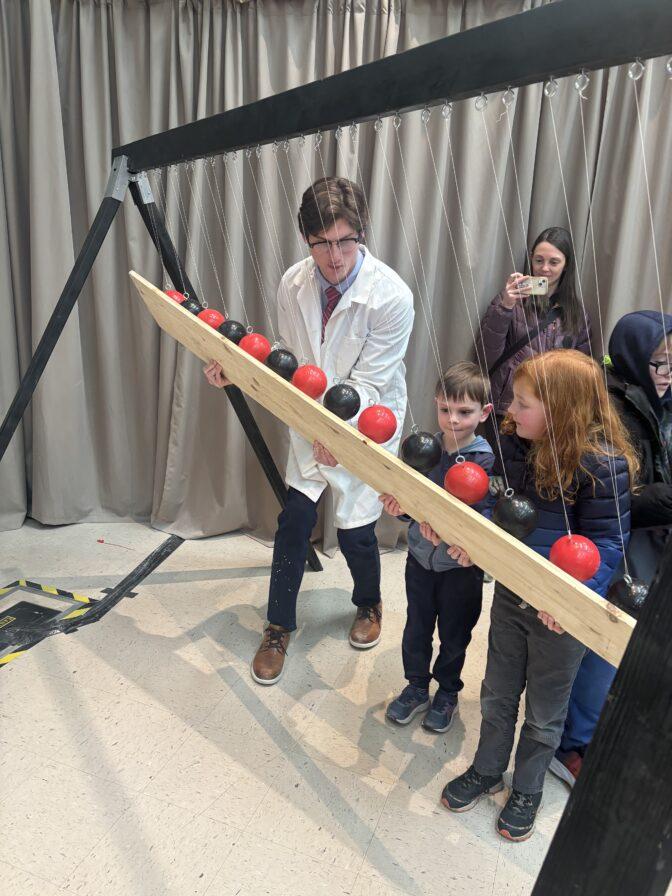“The Wonder of Physics,” an outreach program from the University of Wisconsin physics department, celebrated its 346th show last Saturday — called the “TH3 PHYS1C5 of NUMB3R5”— and performed dazzling physics experiments for an audience of people from all ages and backgrounds.
According to the program, its events have impacted more than 300,000 people, including individuals from underrepresented groups who had the chance to experience physics in a new and engaging way. The program’s success has grown its popularity, with the show traveling to other audiences outside the Madison area.
The purpose of this initiative is to spark an interest in physics for people of all ages. The project was created by former UW professor Clint Sprott in 1984, in an effort to share his enthusiasm for physics, according to the program.
The experiments from the program were conducted by 13 graduate students from the UW physics department, including Raheem Hashmani and Mitanshu Thakore, with professors Michael Winokur and Haddie McLean emceeing the show.
“Numbers can be found everywhere from what you hear to where you are standing,” Thakore said.

The experiments range from radioactivity to sound waves, with lots of liquid nitrogen. The show started with experiments from the Fun Physics Institute, whose aim was to demonstrate the significance of the Newton numbers, dimensionless digits which relate to force and inertia, using experiments such as the wave pendulum, laser balloon pop, Alka seltzer rockets and non-newtonian fluid, which kept the young audience’s attention throughout all the demonstrations.
Another set of experiments led by “The Steampunk Physicists” explained why the numbers for magnetism and density should be considered the best in physics using experiments such as the floating magnet, where a magnet comes into contact with two copper plates — one in liquid nitrogen and the other without. When the magnet approaches the plate in liquid nitrogen, it is repelled due to electric fields.
The demonstration led by “The Space Cadets” showed how when a balloon is submerged in liquid nitrogen, its volume decreases because of the low temperature and rises back when exposed to room temperature. This was one of the most engaging experiments for the kids who couldn’t take their eyes off the experimental surprises.
“Nowadays social media competes with kids’ attention and their focus, the fact that they participate, laugh and genuinely enjoy the experiments is one of the greatest achievements because it means you have got their attention into something interesting,” Hashmani said.


